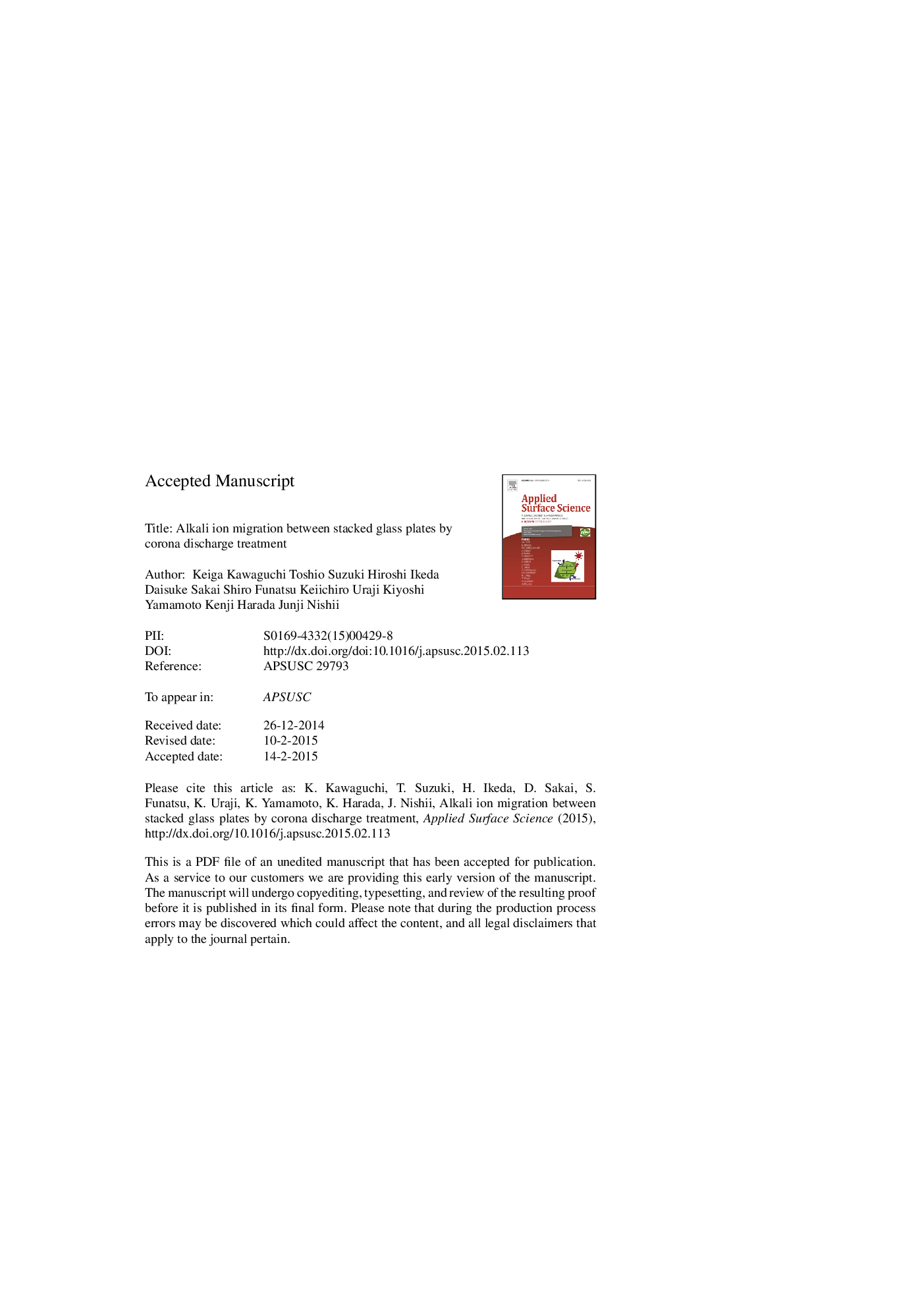| Article ID | Journal | Published Year | Pages | File Type |
|---|---|---|---|---|
| 5350033 | Applied Surface Science | 2015 | 22 Pages |
Abstract
Corona discharge reflects the spatial migration of alkali ions over a gap between two glass plates. This study examined stacked glass plates containing different alkali ions treated with the corona discharge plasma generated by applied voltage of 4.5 kV at 200 °C. Protons generated at the anode electrode penetrate into the potassium-ion-containing upper glass plate, which is located 5 mm below the anode electrode. Potassium ions intruded into the lower glass plate containing sodium ions placed on the cathode electrode, even over a 1 mm gap separating the plates. Finally, the sodium ion discharged on the cathode electrode. The hydrogen atmosphere was effective at inhibiting the potassium ion reaction with ambient gases during the spatial migration between the two glass plates.
Related Topics
Physical Sciences and Engineering
Chemistry
Physical and Theoretical Chemistry
Authors
Keiga Kawaguchi, Toshio Suzuki, Hiroshi Ikeda, Daisuke Sakai, Shiro Funatsu, Keiichiro Uraji, Kiyoshi Yamamoto, Kenji Harada, Junji Nishii,
